| Soft Centre 2 |
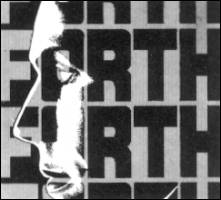
FROM East London Robotics, 48/80 Forth is a full, integer implementation of the language, based on Fig Forth, with additional words defined to use the colour, sound and graphics capabilities of the Spectrum While it will work on the 48K machine it can also be used by, users who have the ELR 80K memory upgrade.
To use the Forth editor it has to be loaded from tape and will give a total of 16 screens, 32K on the 80K version. Each screen consists of 1,024 bytes, made up of 16 lines of 64 characters.
The instruction booklet supplied with the tape gives a very brief introduction to the language and shows how a word can be defined. It also explains the operation of the stack and has a few examples to show loops, conditionals and variables. Beginners, however, will need to buy a book on Forth to obtain the best from the program.
The booklet has a complete glossary of all the pre-defined words and the appendices list the error messages, memory, maps and the necessary information to write your own machine code definitions.
Overall, this is a reasonable but average implementation. If you have the memory upgrade, however, it becomes a far better proposition because of the space available.
John Lambert
| 48/80 FORTH | Memory: 48/80K | Price: £14.95 | Gilbert Factor: 7 |
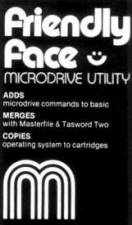
THE FRIENDLY FACE microdrive utility, from Monitor, is intended to provide a user-friendly software interface between the user and a microdrive.
It is designed so that it can be MERGEd into your programs and will then give a standardised method of LOADing and SAVEing to tape or drive.
Included with the standard form are two additional versions designed to be MERGEd with Tasword 2 from Tasman Software and Masterfile from Campbell Systems.
Part of the Friendly Face advertising claims that it "adds microdrive commands to Basic". Perhaps someone should tell the company that all the microdrive commands are already in Basic.
If you are experiencing difficulty becoming used to a microdrive, this program may be of some use but £7.95, or £ 14.95 on cartridge, for a 1K Basic program is scarcely good value.
John Lambert
| FRIENDLY FACE | Memory: 16K | Price: £7.95 | Gilbert Factor: 4 |
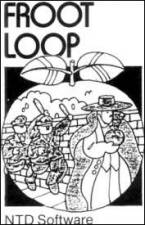
FROOT LOOP is a very standard arcade game in which you have to eat apples and, occasionally, blue bananas, while avoiding the guards and making your way round the screens. They are divided into progressively smaller units.
The game is designed to be used either with keyboard control or with a Kempston joystick, which works satisfactorily. There is a range of skill levels, of which the advertising material reports that number six is "impossible".
This is scarcely an exaggeration. It is, however, almost equally difficult to determine from the instructions how to blast your way through impenetrable walls.
There is a time limit to the game and it becomes progressively more difficult, especially if you make mistakes and lose lives when the guard increases speed.
The graphics, though smooth, are essentially boring and the concept is far from original. It is doubtful if it would enthral even the most enthusiastic arcade player for long.
John Lambert
| FROOT LOOP | Memory: 48K | Price: £3.00 | Gilbert Factor: 5 |
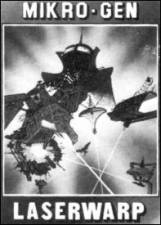
THE PROSPECT of winning £100 for the month's highest score of more than 5,000 may well attract people to Mikro-Gen Laserwarp. The program is another variation on the Space Invaders/Galaxians format.
The laser base moves from left to right across the bottom line and you fire away. There are nine progressive screens, each featuring a different bunch of aliens. They will throw bombs and missiles at the laserbase as they slice the sky or whirl around. Some go straight on at you and not all can be blasted, leaving you no option but to race across from one side to the other, dodging all the time.
There is a practice mode which allows the player to enter and play on any one of the nine screens. In the final screen the Master, evil threat to the entire universe, swanks behind his force field. If you survive long enough it may be possible to terminate him.
The graphics are strong and bright and move at a smart rate. The laserbase fires at a slow speed, so aiming is necessary - you cannot just lay waste whole swathes of aliens. Laserwarp is a tough, zappy program but cannot be called an original concept.
Richard Price
| LASERWARP | Memory: 48K | Price: £6.95 | Joystick: Kempston | Gilbert Factor: 6 |
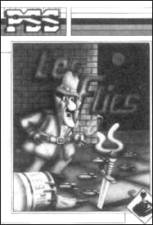
THE INITIAL difficulty you encounter with Les Flics is reading the cassette cover. In its wisdom, PSS decided to write it in Clouseau-speak, that devastating version of English employed by Peter Sellers in the Pink Panther movies. Fortunately for your health, you are not called on to play the scourge of the Surété but the pink-tailed thief who, doubtless for reasons of copyright, is trying to steal a gemstone called the Purple Puma.
The idea is all great fun but the game is rather less than the sum of its concepts. The main screen is a town map; you have to run round the streets avoiding the police, Les Flics of the title, trying to discover the whereabouts of the Purple Puma.
The graphics are poorly-designed; little attempt has been made to control colour overflow when moving characters collide and the people and objects are for the most part single-square characters of little visual interest.
PSS wasted a good opportunity in Les Flics; the game could so easily have been a Spectrum classic. Instead, it is just a run-of-the-mill fix for joystick junkies.
Chris Bourne
| LES FLICS | Memory: 48K | Price: £5.95 | Joystick: Kempston, Cursor | Gilbert Factor: 6 |
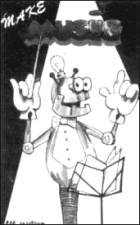
MAKE MUSIC, published by Buffer Micro Ltd, is one of the best music programs available. It permits you to create three-track harmonies, using two octaves of piano-style keyboard for each track. It is designed to be used in conjunction with any sound board which uses the AY-3-8912 chip, for example Fuller, ZON or Timedata.
Using the ZXM Timedata board, you can produce good-quality harmonies with a minimum of practice. Unlike some other music programs, it allows you to hear the music as you play. It also remembers your tunes. So you play on one track at a time and hear the other two while you play. You can also ask the program to repeat sections of music automatically, or to move rapidly forwards or backwards through a recorded tune.
The volume and tone of each track can be altered and recorded tunes can be edited. The only disadvantage to Make Music is that the instructions are not entirely clear and so the exact order of operations needs some thought but that does not detract from its overall quality.
John Lambert
| MAKE MUSIC | Memory: 48K | Price: £6.95 | Gilbert Factor: 8 |
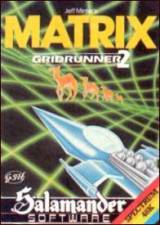
MATRIX from Salamander is the second in Jeff Minter's Grid Wars series, and is based on the arcade classic Centipede. The centipedes move along a grid, which is gathering solar energy for Earth, and as well as attempting to collide with your spaceship they may also drop bombs on you.
At later levels the droids are aided by deflector shields which send your laser fire scattering in all directions except the one at which you aimed, and the now notorious cosmic cameloids, whose presence on the screen decreases your score until you have eliminated them.
Spectrum owners accustomed to the complex graphics and vast playing areas may feel dismissive about the Minter style. He writes simple games which are challenging and appeal particularly to zapper addicts.
The real strength of Matrix is its sheer speed of operation and the delicate game balance, which seems pitched at just the proper level to convince you that you could easily improve your high score if only you had another attempt. That is one of the core secrets of an addictive game.
Chris Bourne
| MATRIX | Memory: 48K | Price: £6.95 | Joystick: Kempston, Cursor | Gilbert Factor: 7 |
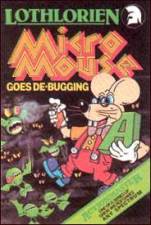
HAVE YOU wondered how your computer corrects the errors in your programs? Electronics buffs may mutter something about currents or pulses but if you have played Micro Mouse by Lothlorien you will know that there is a harassed rodent rushing around the Basic lines spraying bugs with Datakill.
The screen display shows a short program. The determined insects pace about stealing essential figures and letters from the display while Mouse, our helpful hero, goes to the corner storage boxes to collect and relocate them in their proper place.
If Mouse is carrying a letter it is unable to use its can of spray. The more he is trodden on by the bugs, the more letters are interfered with. If he does not get on with the job fast enough the system will crash.
Action is smoothly machine-coded and the graphics are attractive and colourful. The idea is novel and quirky though there is not the excitement which gives an arcade game a compulsive appeal. Despite that, the game becomes progressively difficult and provides good entertainment in a new style.
Richard Price
| MICRO MOUSE | Memory: 16K | Price: £5.95 | Joystick: Kempston | Gilbert Factor: 6 |
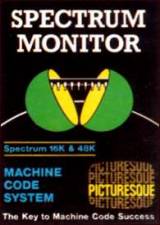
THE LATEST Picturesque version of its Monitor program, 2.1, for the 16K and 48K Spectrum has all the features of the old versions, plus some new ones. It is also microdrive-compatible. Facilities are provided to output to a range of commercial printer interfaces - Kempston, Euro-electronics, Morex, all of Hilderbay and Interface One, in addition to the normal ZX printer.
Being one of the few monitors which can work on the 16K machine, Picturesque has a cult following and it will not be disappointed.
The new commands allow the 16K monitor to be used in conjunction with the 48K assembler and include a trace facility. That permits a program to be single-stepped with a continuous front panel display of all the registers. Breakpoints can be set separately from the main program and a skip to the next RET can be performed.
Users unfamiliar with monitor programs will find it reasonably user-friendly. All the necessary commands are available - display, insert, delete, relocate, fill and a disassembler which does not shoot off the screen before you have read it.